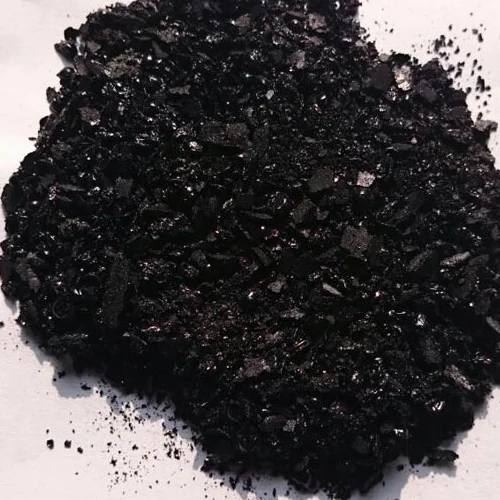Exploring the Market for Exporters of Natural Indigo Dyes and Sustainable Textile Solutions
The Global Marketplace of Natural Indigo Dyes An Overview of Exporters
Natural indigo dye, extracted from the leaves of the Indigofera plant, has long been revered for its vibrant blue hue and cultural significance across various societies. This ancient dye has undergone a renaissance in recent years, driven by increasing demand for sustainable and eco-friendly products. As a result, the market for natural indigo dyes is witnessing substantial growth, with exporters playing a pivotal role in connecting producers and consumers worldwide.
The Rising Demand for Natural Indigo Dyes
With the modern consumer increasingly aware of environmental concerns, there has been a marked shift towards natural dyes in the fashion and textile industries. Natural indigo, in particular, is preferred over synthetic alternatives due to its biodegradability and lower toxicity. Furthermore, as brands seek to align themselves with sustainable practices, they are turning to natural indigo to enhance their product authenticity and appeal to eco-conscious consumers.
Moreover, the global push for organic and sustainable fashion is igniting interest in artisanal and handmade textiles, where natural indigo dyeing techniques often prevail. Countries such as India, Japan, and Madagascar have rich traditions of indigo dyeing, cultivating a network of artisans whose expertise in this craft contributes to the authenticity and quality of the final products. As these regions evolve into key exporters, they are enhancing their standing in the global marketplace.
Key Exporting Regions
India is undeniably one of the largest exporters of natural indigo dyes, leveraging its historical roots and abundant resources. The country boasts a variety of indigo-producing plants, largely concentrated in states like Gujarat and Tamil Nadu. Indian artisans employ traditional methods of dye extraction, ensuring that the dye retains its natural characteristics. In recent years, initiatives promoting fair trade have further improved the welfare of local artisans involved in indigo dye production.
natural indigo dyes exporters

Japan, with its famous “Aizome” indigo dyeing heritage, is another significant player in the natural indigo market. Known for its meticulous craftsmanship and high-quality dye, Japan exports not only the dye itself but also fabrics dyed using traditional methods that appeal to international designers and consumers alike. The blend of modern fashion sensibilities with traditional techniques positions Japanese indigo as both a cultural artifact and a contemporary commodity.
Madagascar is emerging as a promising exporter of natural indigo, bolstered by its unique biodiversity and organic farming practices. The country’s emphasis on sustainable agriculture has attracted foreign partnerships and investments, allowing local producers to scale their operations while preserving traditional practices. With certification as an organic producer, Madagascar's indigo is finding its way into high-end markets seeking authentic and eco-friendly materials.
Challenges and Opportunities
Despite the promising landscape, natural indigo dye exporters face several challenges. Fluctuations in weather patterns can impact crop yields, while market competition from synthetic dyes remains a significant hurdle. To mitigate these issues, exporters are investing in sustainable farming practices, such as crop rotation and organic farming techniques, to ensure a consistent supply of quality indigo.
Furthermore, as the health and environmental benefits of natural indigo gain recognition, opportunities abound for exporters to enter new markets. Collaborations with fashion designers, organic brands, and eco-friendly product manufacturers could unlock substantial growth potential. Leveraging digital platforms to showcase products and foster direct connections with consumers can also enhance visibility and demand.
Conclusion
The natural indigo dye export sector is on an upward trajectory, driven by a growing appreciation for sustainable products and artisanal craftsmanship. As exporters in India, Japan, and Madagascar navigate challenges and capitalize on opportunities, they play a critical role in preserving cultural traditions while meeting the evolving needs of the global market. The story of natural indigo is one of resilience, sustainability, and the deep-rooted connection between nature and craftsmanship, paving the way for a vibrant future in the dye industry.
-
The Timeless Art of Denim Indigo Dye
NewsJul.01,2025
-
The Rise of Sulfur Dyed Denim
NewsJul.01,2025
-
The Rich Revival of the Best Indigo Dye
NewsJul.01,2025
-
The Enduring Strength of Sulphur Black
NewsJul.01,2025
-
The Ancient Art of Chinese Indigo Dye
NewsJul.01,2025
-
Industry Power of Indigo
NewsJul.01,2025
-
Black Sulfur is Leading the Next Wave
NewsJul.01,2025

Sulphur Black
1.Name: sulphur black; Sulfur Black; Sulphur Black 1;
2.Structure formula:
3.Molecule formula: C6H4N2O5
4.CAS No.: 1326-82-5
5.HS code: 32041911
6.Product specification:Appearance:black phosphorus flakes; black liquid

Bromo Indigo; Vat Bromo-Indigo; C.I.Vat Blue 5
1.Name: Bromo indigo; Vat bromo-indigo; C.I.Vat blue 5;
2.Structure formula:
3.Molecule formula: C16H6Br4N2O2
4.CAS No.: 2475-31-2
5.HS code: 3204151000 6.Major usage and instruction: Be mainly used to dye cotton fabrics.

Indigo Blue Vat Blue
1.Name: indigo blue,vat blue 1,
2.Structure formula:
3.Molecule formula: C16H10N2O2
4.. CAS No.: 482-89-3
5.Molecule weight: 262.62
6.HS code: 3204151000
7.Major usage and instruction: Be mainly used to dye cotton fabrics.

